Object Frequency and Predictability Effects on Eye Fixation Durations in Real-World Scene Viewing
DOI:
https://doi.org/10.16910/jemr.3.3.3Keywords:
scene viewing, word frequency, word predictability, LabelMe, latent semantic analysisAbstract
During text reading, the durations of eye fixations decrease with greater frequency and predictability of the currently fixated word (Rayner, 1998; 2009). However, it has not been tested whether those results also apply to scene viewing. We computed object frequency and predictability from both linguistic and visual scene analysis (LabelMe, Russell et al., 2008), and Latent Semantic Analysis (Landauer et al., 1998) was applied to estimate predictability. In a scene-viewing experiment, we found that, for small objects, linguistics-based frequency, but not scene-based frequency, had effects on first fixation duration, gaze duration, and total time. Both linguistic and scene-based predictability affected total time. Similar to reading, fixation duration decreased with higher frequency and predictability. For large objects, we found the direction of effects to be the inverse of those found in reading studies. These results suggest that the recognition of small objects in scene viewing shares some characteristics with the recognition of words in reading.Downloads
Published
2010-07-13
Issue
Section
Articles
License
Copyright (c) 2010 Hsueh-Cheng Wang, Alex D. Hwang, Marc Pomplun

This work is licensed under a Creative Commons Attribution 4.0 International License.
How to Cite
Object Frequency and Predictability Effects on Eye Fixation Durations in Real-World Scene Viewing. (2010). Journal of Eye Movement Research, 3(3). https://doi.org/10.16910/jemr.3.3.3






